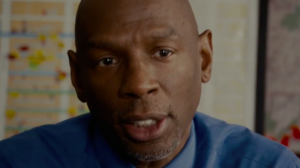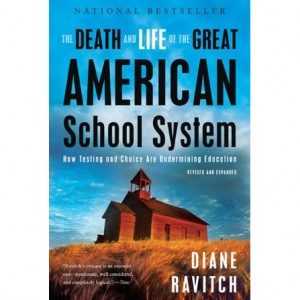Diversification of the Teaching Workforce: New York City and Chicago
The sixties and seventies are world renowned as a time period of national progressive social change in the United States. These two decades were responsible for shaping political and social conflicts that highlighted the absence of many opportunities for people of diverse backgrounds in the United States. As the era of social change came to an end, an increased number of opportunities for people of color became widely available. In fact, during the last four decades, schools have opened their doors to students and teachers of a widely varied range of ethnicities. Because public schools have become increasingly diverse during the last 40 years, a demand for multicultural teachers has also increased. According to statistical data collected from the U.S. Department of Commerce, Bureau of the Census, minority enrollment (students of Black and Hispanic background) made up roughly about 22% of the distribution of public school students. By 1999, minority enrollment was recorded at 38%. With these progressively increasing numbers, schools have started to question the reasoning behind the widening achievement gap that exists between students of color and white students. If multicultural teacher recruitment and retention is the key to closing the achievement gap, how much racial diversification has occurred in the teaching workforce since the 1960s? And how has it affected urban public schools and their students in large American cities such as New York and Chicago?
Although there are factors that may affect a student’s achievement, teachers are ultimately held liable for their student’s successes and failures. There is a large amount of data and research that ultimately prove that teachers have a great degree of influence on their students, especially if they are African American or Hispanic educators (for African American/ Hispanic students. Although the teaching workforce has not shown a tremendous increase in diversity (despite of the need for them), they have served as a changing force, ultimately having a positive effect on inner city students in New York City and Chicago.
Interpreting The Data
Diversification from a nationwide stance
Various scholars including Ana Maria Villegas, Tamara F. Lucas, Margaret Wilder, and Thomas S. Dee have argued that diversifying the teacher workforce has a positive effect on students of color that attend public inner-city schools. In his article, A Teacher Like Me: Does Race, Ethnicity, or Gender Matter? scholar Thomas S. Dee argues that there are teacher effects that ultimately help shape a student’s educational outcome. For instance, he states, “A related type of passive teacher effect is the phenomenon known as “stereotype threat”. Stereotype threat refers to the possibility that, in situations students perceive stereotypes might attach black students with white teachers they (students) experience an apprehension that retards their academic identification and subsequent achievement” (158). When white teachers are placed in school setting that serves predominantly students of color, academic performance may be inhibited in terms of test taking. As the nation becomes increasingly diverse, it is important to take into account what school practices might help close the achievement gap.
In their study, Diversifying the Teacher Workforce: A Retrospective and Prospective Analysis, scholars Ana Maria Villegas and Tamara F. Lucas defend the reasoning behind enforcing the recruitment of diverse teachers, stating that there is a “growing disparity between minority student and minority teacher populations” (76). Contrary to popular assumption, data shows there was a great disparity between the percentage of student and teacher populations enrolled to teach and study at public high schools. According to Table 1 below, in 1971, the percentage of minority teachers in public elementary and secondary schools was 11.7%, while students were at 22.2%.

Data gathered from 1986 showed that there were only 9.4% of minority teachers enrolled at public elementary and secondary schools while the number of students increased to 30.9%. Surprisingly, the difference in percentage points nearly doubled in size- from 10.5 to 21.5 in about a 15-year span (1971-1986).
Similarly, data gathered by Villegas and Lucas showed that in 1987, 13.1% of elementary and secondary public school teachers considered racial/ethnic minority background. Unlike prior data collected, this table shows that there was some increase in the percentage of racial/ethnic minority teachers enrolled at public schools. In 1999 there was a reported 15.7% of racial minority educators teaching at elementary and secondary public schools. Although that is considered quantitative increase, it was certainly not enough to match the large percentage of students that were enrolled at the time.

How “diversified” is America in accordance to their regions?
Analyzing the data provided by the National Center for Educational Statistics led to another quantitative search of the diversification of children enrolled in public schools within each region. Table 3-2 below demonstrates how data gathered by the NCES in October from 1972-99 shows that minority enrollment gradually rose from 18.6% to 31.8% in the 27-year span in the North East; while in the Midwest it nearly doubled from 12.5% to 24.0%. While these two regions account for different states and cities within them, it is important to remember that the need for diverse teachers was as equally important in big cities in the Midwest like Chicago, as those big cities in the Northeast like New York City.

The Census School District Tabulation (STP2) provided a series of longitudinal datasets that shows even more specific data in regards to the ethnicities of children enrolled in public schools during the 1999-2000 school year. These datasets that were collected by the U.S. Census Bureau’s Population Division and sponsored by the National Center for Education Statistics, show that during the ‘99-‘00 school year, Chicago’s Public School District had a total of over 600,00 diverse students enrolled in the 299 public school district, which also happens to be the main district of the city. The New York 2000 Census recorded having about, 1,500,000 “non-white and ethnic students.”

“To some the teacher is in the best strategic position to further movements for a new social order”- New York City teacher union leader Henry Linville
While there is not an exact set of quantitative data provided by each of these states regarding the race of elementary and secondary school teachers, there are various accounts which take into consideration the fact that diverse teachers were and still are indefinitely scarce and very much needed in public school systems. For example, in her book Uncivil Rights: Teachers, Unions, and Race in the Battle for School Equity, author Jonna Perrillo writes, “throughout much of the 1950s, the Teacher’s Union publicly exposed the shockingly low percentage of black teachers in the city and petitioned to train and hire more” (Perrillo p.7). They did this in attempts to diversify and integrate newly desegregated schools, in order to establish communities in diverse neighborhoods. In an attempt to desegregate the school, Perrillo writes, “the UFT recruited black teachers from the South to teach in the city’s schools, and also presented plans to integrate the schools as well” (Perrillo p.8). These plans to recruit and retain teachers came after it was reported that alarmingly low numbers of black teachers were enrolled as teachers in New York City, despite the growing population.
In her historical claim of the trials and tribulations of New York City teachers, Perrillo sheds light on the inequality issues many teachers faced during the late 1950s, and 1960s. In chapter three she notes, “While blacks made up 10 percent of the city’s population, less than 2 percent of the city’s licensed teachers were black” (p. 90). She goes on to state that there were many reasons behind the shortage of black teachers in the workforce, the main reason being discrimination against aspiring African American educators. Perrillo claimed that the Department of Education disputed many unions’ attempts to diversify the workforce in fear that their jobs would be taken away. In chapter 4, named “An Educator’s Commitment”, Perrillo explains a theory proposed by the Harlem Youth Opportunities Unlimited group (HARYOU) which states that, “our community has been controlled by people other than us…Such control was in the hands of educators who have successfully failed to educate blacks and Puerto Ricans in the past- and are afraid that Blacks and Puerto Ricans will do a better job” (p. 128). She goes to on explain that HARYOU was dedicated to educate the masses on the importance of having black teachers in the classroom. Perrillo noted that in New York City schools, “black children lacked positive role models in school extended both to the everyday curriculum and to those who taught it…because they better understood black students, HARYOU found, black teachers were often better to control their classes, and ultimately better teachers” (p. 128).
Parents that were able to see the effects of having their children educated by African-American/ Hispanic teachers versus white teachers were able to testify and rally against having such low numbers of minority teachers in New York City. According to Perrillo, “the problem resided in the fact that while half of the city’s public school students were black and Puerto Rican, less than 10 percent of teachers were” (p. 154). She goes on to state that parents petitioned this, asking for more minority teachers and “for white teachers and supervisors to undergo massive re-training that would bring about a change in attitude and rethinking of some traditional practices.”
Economist Thomas S. Dee further elaborates on the importance of having a teacher of color placed in diverse schools in his article, A Teacher Like Me: Does Race, Ethnicity or Gender Matter? Although he introduces his argument and claims through the notion of stereotype, the more important results lie in data he collected from the NELS88 Longitudinal study. In the data he collected and analyzed, Dee was able to conclude that both “white and minority students are likely to be perceived as disruptive by a teacher who does not share their racial/ethnic designation” (Dee p. 162). His main argument focuses on the notion that “the racial, ethnic, and gender dynamics between students and teachers have consistently large effects on teacher perceptions of student performance…the effects with race and ethnicity appear to be concentrated among students of low socioeconomic status” (Dee p. 163). His interpretation of the data only serves to back up the larger claim made by Jonna Perrillo, which emphasizes the importance of having diverse teachers teach diverse students.
What are the students saying?
Although there have been quantitative claims made by historians like Jonna Perrillo, and economists like Thomas S. Dee, one of the most important pieces of evidence to take into account when looking into the effectiveness of hiring diverse teachers is the opinion of the students themselves. For many years, there have been informal interviews about the positive effects teachers have on their students that are categorized as minority students. In a journal article named, Increasing African American Teachers’ Presence in American Schools: Voice of Students Who Care, author Margaret Wilder notes that researchers Beady and Hansell were able to find that a “teacher’s race was strongly associated with his or her expectations for students’ success” (Wilder p. 209). More specifically through her research, Wilder was able to find that African American teachers expected more out of their students than white teachers did. Through her studies, Wilder was able to find the effects of exposing African American children to African American teachers.
Wilder noted that while her six interviews had substantial information, which fully supported the diversification of the workforce, “that her findings were not representative of an entire population of African American students” (Wilder p. 212). In one of her interviews with a young woman named Rose, the female spoke wonderfully about her prior educator Ms. Rhodes.
Rose: “I never really had too many people in grade school who were real positive. In Upward Bound, I remember Ms. Rhodes. She is an African teacher. She taught us so much about Africa and where we came from and what we had to do. I mean, I love this lady so much. When you look at her, it’s like a glow. She just stands out so much, and she is such a powerful lady. She gave me a view that nobody else really . . . gave me. She really taught me a lot about my history. I never really thought about it before . . . It was the way she talked. When she talks I know everything she says is true. I know she probably would not lie to me or whatever. I mean, you just meet her and you fall in love with her” (p. 213).
This particular interview was a reflection of the interviews that Wilder had transcribed onto her article about the effects of African American teachers. All of the students that were interviewed spoke highly of their teachers, many recalling them as motivating forces in their life. Her interviews gave an insight as to the real effects of placing a teacher of a diverse background (which a student can relate to) in a classroom. Each student’s description of their relationships with their ethnic teachers were rich, and it seemed as if each student was actually invested in and empowered by what they were learning. All of the students always spoke fondly of their teachers and all of them were able to recall many meaningful moments and experiences with all of their racially diverse teachers during their elementary and secondary school careers.
Conclusion
There has been a major underrepresentation of African American, Hispanic, Asian and other ethnic groups in the teaching workforce across the United States. Since the 1960s, many educational reformers have fought to diversify the teaching workforce through establishing guilds and teacher unions. However, their attempts to diversify the workforce has been shot down various times by those who head each state’s department of education (DOE). The United States has undergone a vast amount of social change in the last four decades, but that is still not reflected in our educational system. Each year, the achievement gap between African American/Hispanic students versus white students seems to increase. For many years, parents, educational reformers, and other social activists have fought to diversify the teaching workforce due to their belief that it is the key to closing the everlasting gap.
Because there has not been much quantitative evidence regarding the number of racially diverse teachers in New York and Chicago during the last thirty years, it is evident that there is indeed a shortage of African American/Hispanic teachers. Data collected from the National Center for Educational Statistics portray a small increase of racially diverse teachers within the workforce. The small numbers of ethnic teachers that dedicate their lives to educating children from inner city schools are known to make a difference despite the disparities that exists within each group. Studies such as those conducted by Margaret Wilder indeed show that despite the small amount in increase of the diversity of the workforce, teachers have made significant strides in terms of helping their students and even connecting with their students. Most, if not all of her interviewed youth praised all of their past educators, which is a clear statement on the importance of having students of color also educated by teachers of color.
Bibliography
Dee, Thomas S. “A Teacher like Me: Does Race, Ethnicity, or Gender Matter?” The American Economic Review 95.2 (2005): 158-65. Web.
NCES (National Center for Education Statistics). (1997). Selected characteristics of public school teachers: Spring 1961 to spring 1996. In Digest of Education Statistics, 1997.
NCES (National Center for Education Statistics). (1999). Table 3-1 Percentage Distribution of public school students enrolled in grades K-12 who were minorities: October 1972-99. In The Condition of Education, 2001.
NCES (National Center for Education Statistics). (1999). Table 3-2 Percentage distribution of public school students enrolled in grades k-12 who were minorities, by region: October 1972-99. In The Condition of Education, 2001.
Perrillo, Jonna. Uncivil Rights: Teachers, Unions, and Race in the Battle for School Equity. Chicago: University of Chicago, 2012. Print.
School District Demographics System. 2000 Census: Chicago District 299, New York City DOE. Accessed April 30th, 2013
Villegas, Ana María, and Tamara F. Lucas. “Diversifying the Teacher Workforce: A Retrospective and Prospective Analysis.” Yearbook of the National Society for the Study of Education 103.1 (2004): 70-104. Web.
Wilder, M. “Increasing African American Teachers’ Presence in American Schools: Voices of Students Who Care.” Urban Education 35.2 (2000): 205-20. Print.





